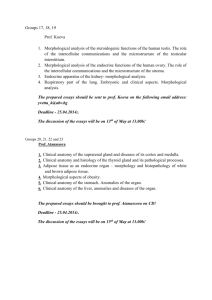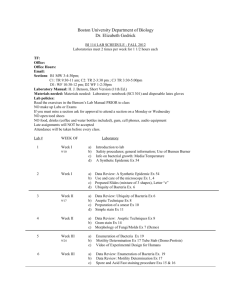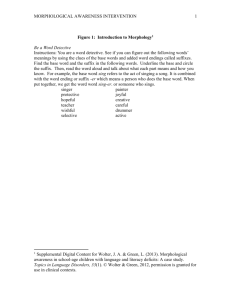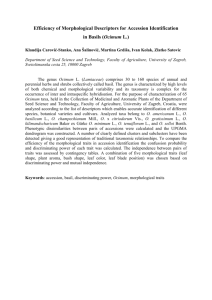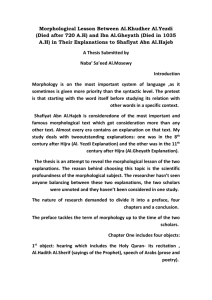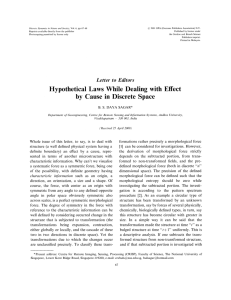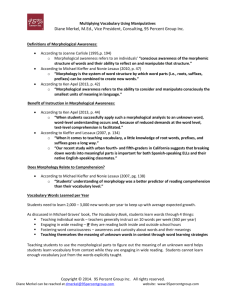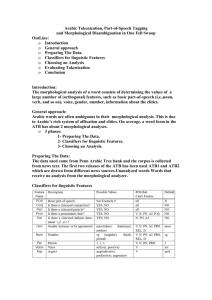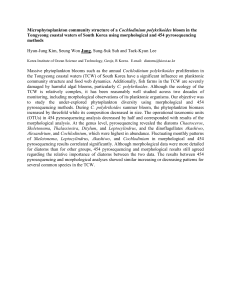Abstract - University of Oxford
advertisement
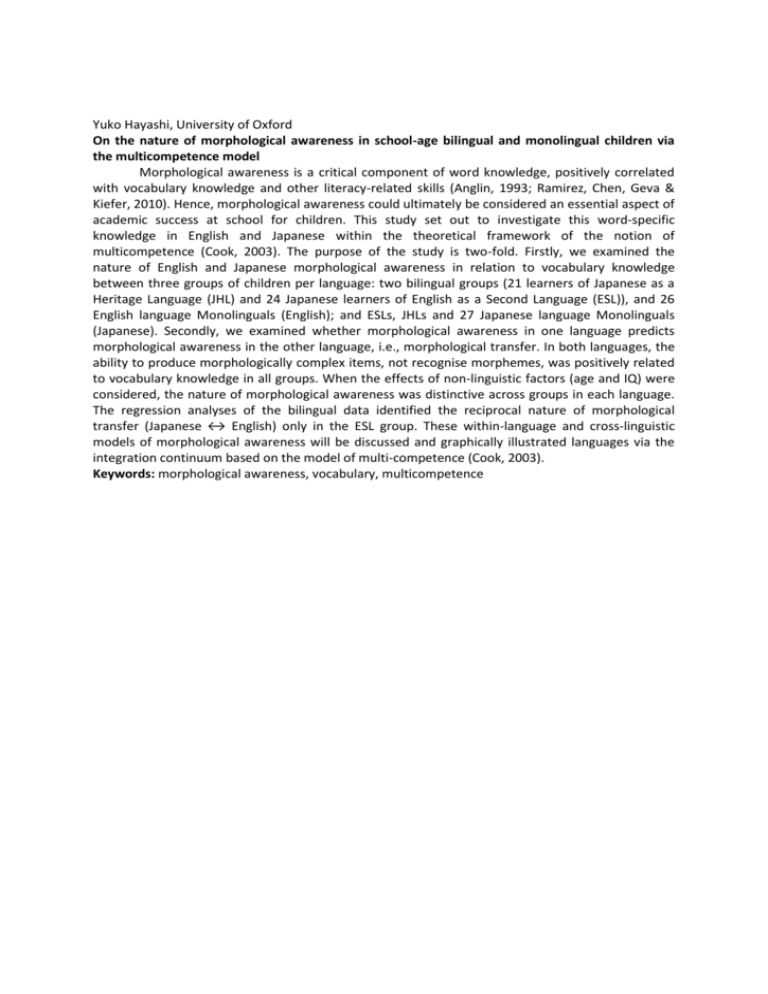
Yuko Hayashi, University of Oxford On the nature of morphological awareness in school-age bilingual and monolingual children via the multicompetence model Morphological awareness is a critical component of word knowledge, positively correlated with vocabulary knowledge and other literacy-related skills (Anglin, 1993; Ramirez, Chen, Geva & Kiefer, 2010). Hence, morphological awareness could ultimately be considered an essential aspect of academic success at school for children. This study set out to investigate this word-specific knowledge in English and Japanese within the theoretical framework of the notion of multicompetence (Cook, 2003). The purpose of the study is two-fold. Firstly, we examined the nature of English and Japanese morphological awareness in relation to vocabulary knowledge between three groups of children per language: two bilingual groups (21 learners of Japanese as a Heritage Language (JHL) and 24 Japanese learners of English as a Second Language (ESL)), and 26 English language Monolinguals (English); and ESLs, JHLs and 27 Japanese language Monolinguals (Japanese). Secondly, we examined whether morphological awareness in one language predicts morphological awareness in the other language, i.e., morphological transfer. In both languages, the ability to produce morphologically complex items, not recognise morphemes, was positively related to vocabulary knowledge in all groups. When the effects of non-linguistic factors (age and IQ) were considered, the nature of morphological awareness was distinctive across groups in each language. The regression analyses of the bilingual data identified the reciprocal nature of morphological transfer (Japanese ↔ English) only in the ESL group. These within-language and cross-linguistic models of morphological awareness will be discussed and graphically illustrated languages via the integration continuum based on the model of multi-competence (Cook, 2003). Keywords: morphological awareness, vocabulary, multicompetence


